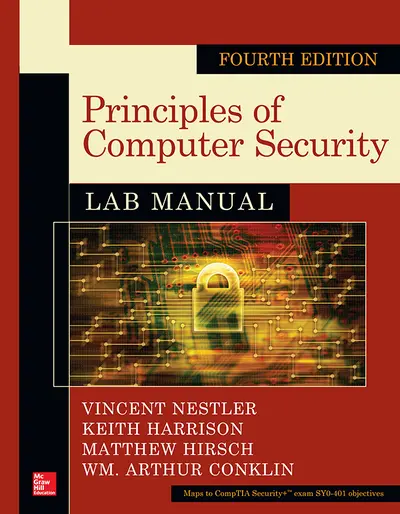My Account Details

ISBN10: 0071836551 | ISBN13: 9780071836555

Step 1 . Download Adobe Digital Editions to your PC or Mac desktop/laptop.
Step 2. Register and authorize your Adobe ID (optional). To access your eBook on multiple devices, first create an Adobe ID at account.adobe.com. Then, open Adobe Digital Editions, go to the Help menu, and select "Authorize Computer" to link your Adobe ID.
Step 3. Open Your eBook. Use Adobe Digital Editions to open the file. If the eBook doesn’t open, contact customer service for assistance.
Publisher's Note: Products purchased from Third Party sellers are not guaranteed by the publisher for quality, authenticity, or access to any online entitlements included with the product. Practice the Computer Security Skills You Need to Succeed! 40+ lab exercises challenge you to solve problems based on realistic case studies Step-by-step scenarios require you to think critically Lab analysis tests measure your understanding of lab results Key term quizzes help build your vocabulary Labs can be performed on a Windows, Linux, or Mac platform with the use of virtual machines In this Lab Manual, you'll practice Configuring workstation network connectivity Analyzing network communication Establishing secure network application communication using TCP/IP protocols Penetration testing with Nmap, metasploit, password cracking, Cobalt Strike, and other tools Defending against network application attacks, including SQL injection, web browser exploits, and email attacks Combatting Trojans, man-in-the-middle attacks, and steganography Hardening a host computer, using antivirus applications, and configuring firewalls Securing network communications with encryption, secure shell (SSH), secure copy (SCP), certificates, SSL, and IPsec Preparing for and detecting attacks Backing up and restoring data Handling digital forensics and incident response Instructor resources available: This lab manual supplements the textbook Principles of Computer Security, Fourth Edition, which is available separately Virtual machine files Solutions to the labs are not included in the book and are only available to adopting instructors
1. Workstation Network Configuration and Connectivity
2. Network Transports
3. Network Applications
Part II: Vulnerabilities and Threats--How Can Systems Be Compromised
4. Penetration Testing
5. Attacks--Attacks Against Applications
6. Escalating Privilege--Sniffing, Keylogging, Password-Cracking Attacks
Part III: Prevention: How Do We Prevent Harm to Systems
7. Hardening the Host Computer
8. Securing Network Communications
Part IV: Detection and Response: How Do We Detect and Respond to Attacks
9. Preparing for and Detecting Attacks
10. Digital Forensics
Need support? We're here to help - Get real-world support and resources every step of the way.